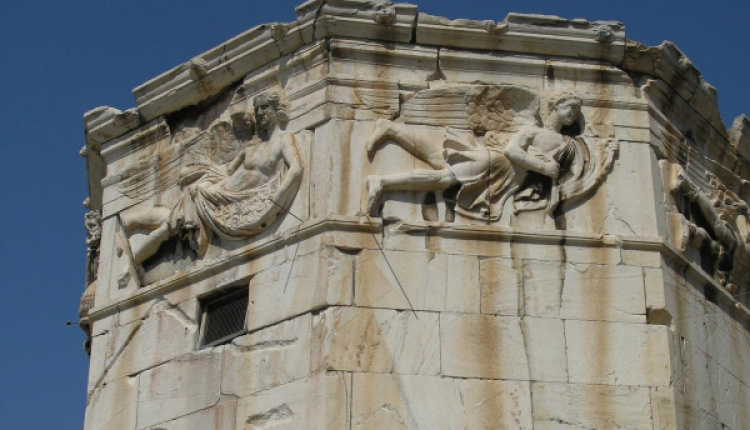The Oldest Weather Station In The World Is In Greece
- by XpatAthens
- Wednesday, 30 November 2022

The ancient Greeks can boast about numerous great discoveries and inventions that have passed the test of time and are still used today.
One of these discoveries is the weather station. The oldest weather station in the world is actually located in Athens, in the historic center, and is none other than the famous Aeris.
Standing just below the Acropolis in the center of the ancient Roman Agora, the impressive marble building, also known as the Tower of the Winds, is one of the country’s most important ancient monuments, dating back to the 1st century BC.
It is an octagonal tower, 13.5 meters high with a diameter of about 8 meters, made of fine Pentelic marble. It has no columns, but engraved in its walls you will find the eight winds, from which it got its popular name. It has two doors, one to the north and one to the west, and a conical roof.
A clocktower and a weather station
According to research, the height of the structure, the sundials, the weather vane, and its location in the Roman Agora make it an early example of a clock tower.
However, archaeologists believe that it is probably both a clock tower and a weather station, probably used by traders to calculate the time and the prevailing winds that affected the trade routes through which their goods would arrive.
At the top of the Tower of the Winds was a brass, Triton-shaped weathervane that rotated to indicate the direction of the eight winds. There are also eight sundials.
Inside the tower, there was a specially-designed installation of a hydraulic clock to calculate the time on dark days.
The tower through the centuries
The history of the Tower of the Winds followed that of Athens itself. In the early Christian years, it was used as the bell tower of a Byzantine church, while a cemetery was built in the surrounding area.
When, however, the Byzantine Empire collapsed after the fall of Constantinople and Greece came under the occupation of the Ottomans, the monument became a place of prayer for the Mevlevi dervish order called "Brakis' tekke".
The monument gave its name to the neighborhood around it and is still one of the most picturesque parts of old Athens, which will always remind us of the ingenuity and innovativeness of our ancestors.
Originally published in Greek on: newsbeast.gr
Originally published in Greek on: newsbeast.gr
Translated by: Codico Lab


